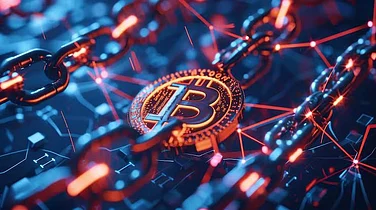The world of finance has witnessed a massive shift over the last two years with the birth of Decentralized Finance (DeFi). It is blockchain-based, and DeFi eliminates all middlemen like banks and financial institutions, allowing users to perform transactions, lend, borrow, and invest directly through smart contracts.
Maybe the most revolutionary aspect of DeFi is DeFi lending, in which users can lend out their cryptocurrency and earn interest on it — without the use of centralized banks. By severing central control from the leash, DeFi protocols empower users with the agency of transparency, accessibility, and autonomy in finance.
What Are DeFi Protocols?
DeFi protocols are blockchain-based platforms that provide financial services without central intermediaries. They are powered by smart contracts, which are computer programs that automatically execute transactions if specific conditions are met.
Some common examples include:
Aave – a lending protocol that allows users to borrow and lend cryptocurrencies.
Compound – excels in algorithmic interest rates for cryptocurrency lending.
Uniswap – a decentralized exchange (DEX) for cryptocurrency trading.
MakerDAO – the protocol that secures the DAI stablecoin, which is used for collateralized lending.
Effectively, DeFi protocols are similar to robo-financial environments that provide DeFi borrowing, lending, trading, and even yield farming.
How DeFi Lending Works
The foundation of DeFi protocols is lending in DeFi, the most accessed service of the platform. It allows users to lend their cryptocurrencies to liquidity pools or borrow money by providing crypto as collateral and earn interest.
Here's how it typically operates:
Lenders Deposit Assets:
Users deposit cryptocurrencies like ETH, USDT, or DAI into DeFi lending pools.
Borrowers place a higher value of crypto as collateral to borrow some other asset.
Smart Contracts Regulate Transactions:No authority or bank holds the funds. Instead, smart contracts automatically execute loan conditions.
Making Interest:Lenders earn interest based on supply-demand ratios in the pool, while borrowers pay interest.
Example
If you lend ETH to a protocol like Compound, you get interest in real time. If you borrow with your DAI as collateral, the system maintains your loan over-collateralized so that defaults are avoided.
Why DeFi Lending Is Getting Popular
DeFi lending has several strengths over the old-fashioned lending mechanisms:
1. Transparency
All of this is written on a public blockchain and thus transactions are open, and there are no secret fees.
2. Access
It's accessible by anyone with internet and a crypto wallet — no bank approval or credit score needed.
3. High Yield Opportunities
DeFi systems tend to pay higher interest rates than banks because they have access to the global pool of borrowers and lenders.
4. Security Through Smart Contracts
Smart contracts make lending operations automatic and minimize human intervention or manipulation.
5. Financial Inclusion
DeFi protocols open avenues for customers in underbanked or unbanked regions to obtain credit and savings.
Challenges and Risks in DeFi Protocols
While DeFi protocols provide a more open financial universe, they are not free from challenges:
1. Smart Contract Vulnerabilities
A single bug or exploit in the code can cause massive losses.
2. Volatility of the Market
Prices of crypto are extremely volatile. Collateral value will be too low to liquidate loans automatically if it drops.
3. Risks of Regulations
Since governments are attempting to regulate cryptocurrencies, lending DeFi platforms could have issues with compliance.
4. Liquidity Risks
When numerous users withdraw funds simultaneously, the liquidity pools may get drained. Despite all these problems, constant innovation and auditing are making DeFi protocols safer and more secure.
The Future of DeFi Lending Protocols
The future of DeFi lending is rosy. As blockchain systems are being gradually assimilated into traditional finance, hybrid models (CeFi + DeFi) can be adjusted to suit needs. Institutional investors are even eyeing decentralized protocols for open lending operations.
Innovations like cross-chain lending, AI-based risk management, and real-world asset tokenization will further strengthen DeFi ecosystems. Decentralized lending may become as common as online banking today — but more transparent, more accessible, and more borderless.
Key Takeaways
DeFi protocols are decentralized platforms offering financial services without the involvement of middlemen.
DeFi lending allows anyone to lend or borrow cryptocurrency assets with security through smart contracts.
These frameworks bolster financial inclusion, transparency, and returns opportunities.
In spite of threats, DeFi continues to attract users and institutions.
The decentralized future of lending — powered by innovation, not institutions.
FAQs on DeFi Protocols and Lending
1. What is DeFi lending?
DeFi lending is a blockchain-based service that enables individuals to borrow or lend digital assets directly without intermediaries. It facilitates the transaction and interest rate automatically through smart contracts while providing safe custody of them.
2. What are the contrasts between DeFi protocols and traditional banks?
DeFi protocols do not require centralized control as in the case of banks. They instead employ open blockchain networks and smart contracts instead of paper or human signatures.
3. Is DeFi lending safe?
DeFi lending can be safe when using audited and established platforms like Aave or Compound. However, users ought to understand smart contract risks as well as crypto price volatility.
4. Can I earn passive income with DeFi lending?
Yes. If you are lending your cryptocurrency assets to DeFi lending pools, you are qualified to receive interest or rewards based on platform rules and market rates.
5. Top DeFi protocols for lending in 2025?
Top platforms are Aave, Compound, MakerDAO, and Venus Protocol, all with their own features and structures of interest.
Conclusion
DeFi protocols are more than a technological innovation — they represent a financial revolution. Through the removal of traditional intermediaries in the form of smart contracts, DeFi lending has completely shifted our paradigm on borrowing, saving, and earning money.
As the ecosystem evolves, these decentralized systems will keep powering individuals, promoting financial inclusion, and shaping the world financial landscape for the centuries that lie ahead.





















